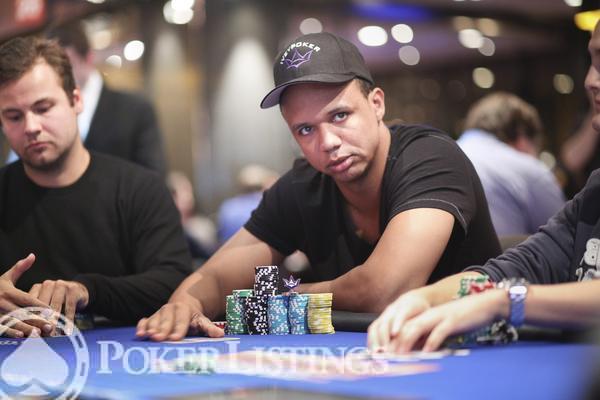This week we’re digging in to a textbook example of “next-level thinking” between world-class pros.
The two players involved are Phil Ivey and Jason Mercier, two of the best players in the world.
The stakes are sky high and the hand was filmed for all to see.
Their battle escalates on the flop but the conditions for it developed right from the jump.
Flop to River
The following hand is from High Stakes Poker, which featured an amazing assembly of top players back in the day.
The blinds are massive: $600/$1200 plus a $100 Ante. We’re assuming the position of Phil Ivey now, who’s sitting on the button.
Gus Hansen raises from early position to $4,200. Eli Elezra calls, and Ivey finds on the button.
He calls, too, but then Mercier reraises from the small blind to $22,100. Both Hansen and Elezra fold, but Ivey calls again.
We’re heading to the flop with $55,000 already in the pot and effective stacks of $185,000.
The flop is
Mercier keeps the lead and bets $28,700. Ivey raises with his overpair to $78,700 and Mercier moves all-in for $185,100.
Ivey pulls a face like he doesn’t like it at all, tanks for a minute and then calls. Mercier shows
Turn River
The $425,200 pot goes to Phil Ivey.
Hand Analysis
The situation escalates quickly and Mercier shows a remarkably weak hand at showdown. But let’s see the dynamics of the hand that led to this situation.
Pre-flop, after Hansen’s light raise and Elezra’s call, Ivey decides to call from the button and then take it from the flop.
Mercier is in a different spot. He sees his chance to squeeze play from the small blind and he takes it.
There are two reasons why this could very well be successful.
1. It’s likely that none of his opponents has a strong hand. Hansen is very loose, and both Elezra and Ivey just called instead of raising with a big hand to get rid of other opponents.
2. Although his hand is not exceptionally strong, he has a suited ace that blocks a lot of big hands and could become the best hand if he hits an ace on the board.
Hansen and Elezra indeed fold their weak hands, but Ivey sticks to his initial plan and calls the raise, too.
Every Card Higher Than a Nine Worrying
On the flop, Ivey holds an overpair while Mercier finds only a gutshot and a backdoor flush draw. But that’s only a secondary problem.
Mercier now carries on with his strategy to win the hand. He represents a big pair. He slightly overbets the pot, but then Ivey raises.
Ivey wants to take it down here and now. He doesn’t really want to see another community card because it could often be a bad one.
Every card higher than a nine would be worrying for him. It could hit Mercier, but it would also be disastrous if it doesn’t and Ivey then folds the better hand.
Mercier is, however, far from giving up. He pushes all-in, which is a perfectly credible way to represent a high pocket pair.
On top of that his ace and gutshot draw give him seven outs, equalling 32% pot equity. Considering how much money there is in the pot, his hand is surely worth the all-in bet.
Had They Had Bigger Stacks …
He can even have some fold equity. You can see part of it in Ivey’s face when he responds to Mercier’s all-in. There are very few draws on the board so a semi-bluff is unlikely. Ivey has to be seriously worried about a higher pocket pair in Mercier’s hands.
After Ivey raised, however, it’s difficult for him to get out of the hand. He only has to pay another $106,400 to win the $318,800 in the pot. He’s getting 3-1 pot odds so he only has to win one out of four times to justify the call.
But if you look closely at Ivey’s face, you can see that Mercier is very close to tricking him.
Had they had larger stacks, Mercier might actually have made Ivey fold.
Conclusion
Jason Mercier tries an amazing, elaborate bluff that is perfectly profitable.
The only problem is that his opponent is named Phil Ivey.
Ivey isn’t exactly happy about how the hand develops but at the end of the day he remains undeterred and sticks with his plan.




